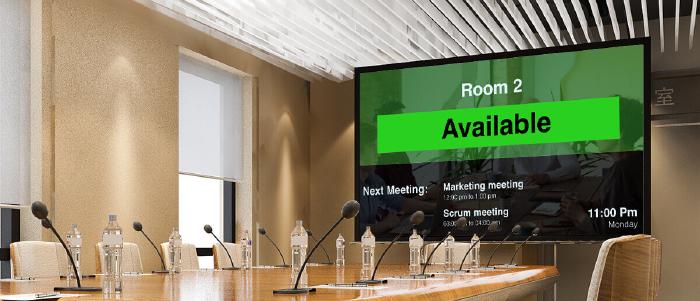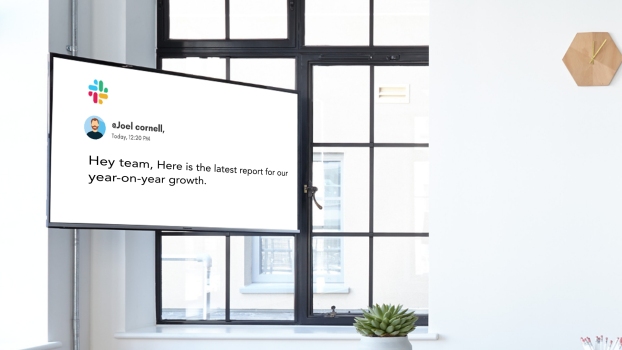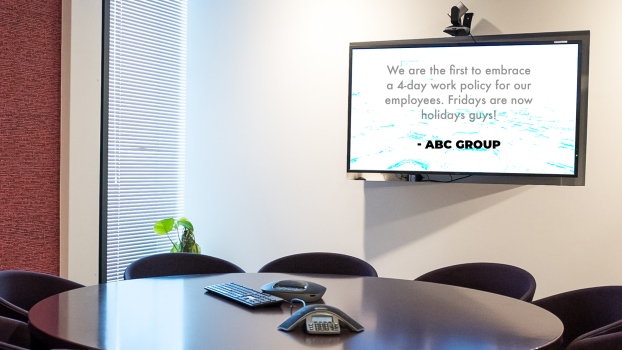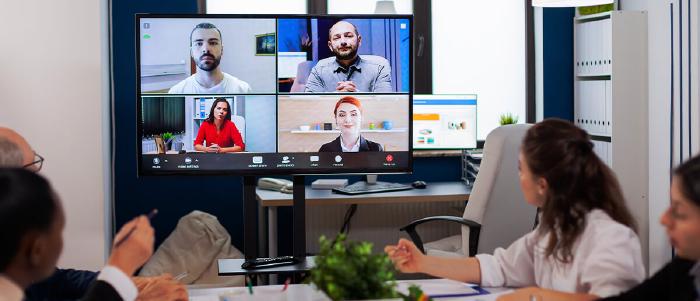
Dec 29 2021
10 min read

The period of Coronavirus has placed organizations in a state of limbo with its on and off waves. The world is still unsure whether this moment would be a decent opportunity to begin working from the office. Now, the world has recorded a sharp decrease in the number of coronavirus cases after the subsequent wave dropped, supported by a quick vaccination drive.
Many organizations like Capital One, Infosys, Apple, Goldman & Sachs, and HCL Tech have laid out their back-to-office plans, complying with Covid-safety protocols. While a few companies have announced a full-fledged reopening, many are still taking the middle road with hybrid models.
Here are some of the famous organizations that may be planning a return of their employees to the office, either partially or fully:
Netflix: The most popular OTT platform’s CEO Reed Hastings has announced several times, in the past, that he will be strategizing a total return to office of the following complete vaccination of their employees. However, the date of the office reopening remains officially unannounced.
Amazon: The e-commerce giant has recently updated its return to office plans in the wake of the rising Omicron infections. The plans have been postponed from September 7, 2021, to January 3, 2022.
Wells Fargo & Co.: The American bank also announced its plans to call the employees back to the office from January 10, 2022, using a hybrid wok model.
Infosys: Indian IT giant Infosys is ready to reopen its physical workstations from the beginning of the upcoming year. The company, too, will follow a hybrid model.
For many businesses, the need for a physical office space is a non-negotiable requirement. Statistics show that business deals are higher with face-to-face meetings and presentations in the office conference rooms rather than from the comfort of the couch.
However, asking employees to return to the office comes with challenges, as organizations have to be responsible for the health and safety of their staff. But, there are a few other challenges that are contributing to the current atmosphere of the great resignation:
Coronavirus set an entirely different accentuation. For some, getting back to the workplace incited sensations of dread, stress, and nervousness following a long time of being told to stay away from individual people and try not to inhale a similar air.
There can be no question that this specific component will be one of the greater difficulties a business will confront. Would employees be able to go back and forth through front entryways securely, travel down passages or utilize the washroom without negating social separating necessities? How would the employees perceive enclosed glass conference rooms?
One of the critical advantages of remote working has been the additional benefit of adaptability over the customary office model. In the past two years, the time lost in getting ready, driving, and being out of the house the whole day has been used well by many remote employees to focus on their children’s homework or accompany the elders to the clinics. As we return to the workplace, many will feel that deficiency of time.
Out of so many conducted surveys, one of them directs a good majority of employees voting for a hybrid module, and many organizations have welcomed this module of working.
Regardless of the working model, businesses will have to consider these challenges (and the initial resistance) while chalking out a return-to-office strategy. Such extreme changes have been achieved at a phenomenal rate and request, and for some organizations, it will be an experimentation work in progress. Workers, on the other hand, should be sensible.
Here are seven strategies businesses can use as they plan a circle back to work-from-office.
A party can cheer up anyone any day, and this gesture goes a long way in making your staff feel welcomed after such a long time. People are tired of celebrating annual events and town halls virtually. An office party with real party poppers and cake and a dress code will be the first step to getting your employees out of their two-year-long boring domestication.
We all live in a digital age, and digital signage is a fantastic way to show throwback photos and videos. A walk down the memory lane will fill the employees with joy and wholesomeness as screens flash the pictures back from the past. A simple audio-visual presentation on your corporate TVs with Google Slides can work just the charm.
The office administration has to ensure that Covid protocols are being followed. And that is not an easy task, especially if you have a 1000 strong workforce coming returning to the office. Creating a temporary task force with HRs, managers, and medical staff will reduce the chances of contamination. Since the vaccinated individuals are also at risk of contracting the virus, the management has to incorporate regular temperature checks, antibody and RTPCR tests in their organization policies.
Corporate TVs can be employed to show social interaction advisories, health & hygiene guidelines, and a live Covid-19 dashboard to remind workers of various health safety precautions.

With the constant use of online meeting platforms like Zoom, Skype, and Google Meet due to work from home protocol, employees have gained pace working by being connected virtually to maintain their social relationships. According to surveys, the total time spent on video conferencing solutions increased 3-5 times.
Many of our work files are now in cloud storage rather than in the on-premise systems. At this stage, suddenly disrupting virtual communications can do significant harm. Especially those offices planning to reopen on hybrid model need to keep virtual communication channels open. Meeting rooms can be equipped with digital screens that can stream web URLs using a digital signage software so that your employees who are working from home or from halfway across the world can also attend the meetings and discussions.
The role of digital screens for communication gets more and more critical in the return-to-office setup. At a volatile time when people are ready to give resignation, organizations shouldn’t fuel their will by allowing any miscommunication.
If your organization is making shifts in policies, working hours, and pay structure, it is important that your employees immediately know that news. Make sure all the updates are clearly shown on your corporate displays.

As organizations call their employees back to work, they need to prioritize internal branding over external branding. An employee planning on issuing a resignation letter will give a second thought when they see the fantastic perks and wellness programs that you have launched for them. Businesses can also strategically present a competitive analysis of the benefits to retain employees. Reports have suggested that people are inclined to work where the organization’s values align with theirs.
Whether it is by deploying a wayfinding solution in your tech park, or by making the office cafeteria menu accessible with mobile, the more you make your workplace easier for your employees, the higher will be the employee experience. Yes, while we all think about the client experience, firms planning to reopen need to improve the employee experience to combat the resistance to return to the office.
As the world gradually plans to redeem the rooms of normalcy and many offices plan a grand return-to-office, the management will face resistance for some time. Technology, as usual, will play a pivotal role in shaping communication and improving the workflow. Upgrading your premises digitally is a must before you even send that ‘we are reopening from…’ email to your employees in 2022.

Dec 29 2021
10 min read

Dec 24 2021
7 min read

Apr 12 2021
10 min read

Mar 2 2021
4 min read
Take complete control of what you show on your digital signage & how you show it.
Start Free Trial Schedule My DemoSee How to Boost Sales & Branding with Digital Signage -40% Less Work, Faster Updates, Better Visibility
Unlock Exclusive Insights